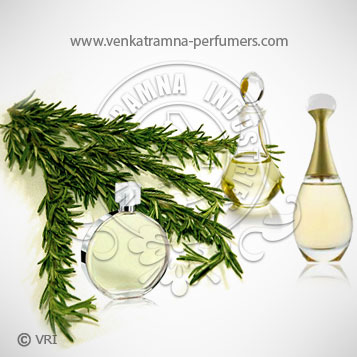
| Botanical Name | Rosemarinus officianlis |
| Common Name | Rose Geranium, Pelargonium Graveolens, Rosemary, Alecrim, Mi Tieh Hsiang, Rosemarin, Romero, Romarin. |
| Country of Origin | France, Spain, Morocco, Tunisia, Russia, USA |
| Solubility | Insoluble in water, soluble in alcohol and oils |
| Specific Gravity | 0.9140 @ |
| Optical Rotation | -1.13 |
| Refrective Index | 1.4679 |
| PlantPart | Herb |
| Bland With | Cedarwood, citronella, geranium, lavender, lemongrass and peppermint. |
| CAS No | 8000-25-7 |
| Flash Point | 76°C |
| Extraction Method | Steam Distilled |
Our range of Rosemary Essential Oil is extracted from the evergreen rosemary shrub. Known for its fragrant aroma, the concoction is nature’s herbal remedy for sharpening the mental faculties and improving mental awareness.
Rosemary carries the energy of a stern teacher. Although it is an herb of the sun, it is not bright and sunny, but rather, serves as a constant reminder of our highest consciousness and conscience. Rosemary is a herb of memory and so it has become associated with all the things and people we want to keep alive and dear in our hearts. It is an herb of love, though it is anything but erotic. Rather, it is a reminder of the bond between the souls, the special spirit tie that is so easily forgotten amidst the ups and downs of day to day life. It is also a funerary herb, thrown on the grave as a last assurance that the soul of the departed will never be forgotten. More mundanely, Rosemary also helps students with their studies, or old people with their fading memories. In medieval times it was one of the most important herbs of the still room and it was extensively used in dozens of cosmetic or remedial preparations. Rosemary is a Mediterranean herb that likes to be kissed by the Sea - although it does not have to 'see' the sea, it never grows far from it in the wild. The leathery, scented leaves look more like evergreen needles than leaves. Early in spring (in France as early as January) the shrubby bushes become laden with flowers that are very popular with bees. Although not the most lovely smelling essential oil, it is invaluable for its therapeutic effect, particularly with regards to many of our modern 'civilization' diseases
Color : Colorless or pale yellow liquid @22°C with Refreshing, Woody, Herbal odor,
Aroma : Organic Rosemary Essential Oil has a strong, clear, penetrating, camphoraceous and herbaceous aroma
a-pinene, borneol, b-pinene, bornyl acetate, camphor, camphene, 1,8-cineole, limonene, Terpene, Alcohol, Ketones, Linanool
Rosemary oil is famous for acting as a brain stimulant. It increases brain power and is wonderful on the central nervous system. It has been acknowledged to sharpen memory and clear the mind as well as increase mental awareness. Rosemary is widely cultivated for culinary and medicinal use. It is used in a wide variety of dishes, including as a meat seasoning (lamb, poultry), to add flavor to soups and vegetables, and in fruit salads, dressings, and stuffings. As reflected by the name officinalis, it is known as a medicinal herb, with a long history of use in the West, including nervous system ailments. Queen Isabella of Hungary in the fourteenth century used rosemary to treat gout and rosemary has been burned in sick rooms as a disinfectant. Its aromatic properties are used to scent cosmetics.